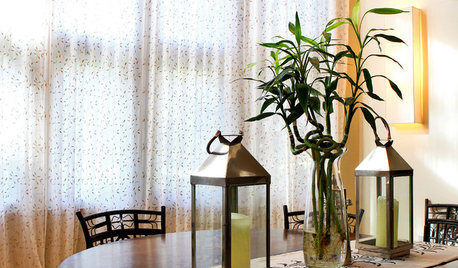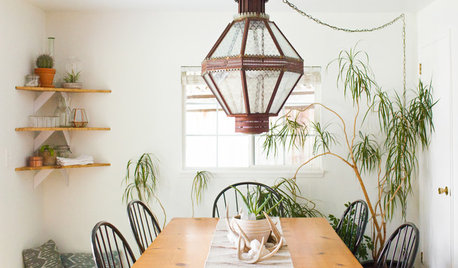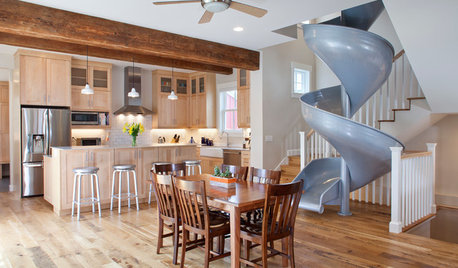Dracaena marginata Advice
cliss
13 years ago
Related Stories

HOUSEPLANTSGet a Dash of the Rain Forest With Madagascar Dragon Tree
This living decoration reaches up to 15 feet, has minimal needs and adapts to different light levels — just steer clear of fluoride
Full Story
DECORATING GUIDESImprove Your Style Fortune With Lucky Bamboo
Serve this versatile plant straight up or with a twist for auspicious living decor that thrives without soil
Full Story
HOUSEPLANTS10 Top Plants to Grow Indoors
Brighten a room and clean the air with a houseplant that cascades artfully, stretches toward the ceiling or looks great on a wall
Full Story
HOUSEPLANTS8 Essentials for Healthy Indoor Plants
Houseplants add so much to our homes — and can thrive when grown in the right conditions. Keep these tips in mind
Full Story
ECLECTIC HOMESMy Houzz: A Sanctuary With Bohemian Flair in the Pacific Northwest
See how a retail display artist and a Pilates instructor personalize their midcentury rambler
Full Story
MY HOUZZMy Houzz: Japanese Minimalism Blends With Classic New Orleans Style
African art and indoor plants complement the clean and modern aesthetic of two landscape architects
Full Story
GARDENING FOR BUTTERFLIES3 Ways Native Plants Make Gardening So Much Better
You probably know about the lower maintenance. But native plants' other benefits go far beyond a little less watering and weeding
Full Story
PETSWorld of Design: Pampered Pets and Their 10 One-of-a-Kind Homes
Fall in love with these critters and their clever living spaces, from a cat playground in France to a chicken house in the U.S.
Full Story
DINING ROOMSNew This Week: 6 Modern Dining Zones in Homes Big and Small
Look to splashy accent walls, right-sized tables and indoor slides to make the most of your open layout
Full Story
ECLECTIC HOMESMy Houzz: From Beige and Bland to Eclectic and Moody in Austin
Colorful graphic wallpaper and eclectic finishes help transform this 1970s Texas home
Full Story





tapla (mid-Michigan, USDA z5b-6a)
birdsnblooms
Related Professionals
Clark Landscape Architects & Landscape Designers · Southfield Landscape Architects & Landscape Designers · Wakefield Landscape Contractors · Brookside Landscape Contractors · Arlington Landscape Contractors · Broomfield Landscape Contractors · Danvers Landscape Contractors · Garland Landscape Contractors · Painesville Landscape Contractors · Rockland Landscape Contractors · Rockwall Landscape Contractors · Waipahu Landscape Contractors · Linton Hall Interior Designers & Decorators · Lomita Interior Designers & Decorators · Washington Interior Designers & DecoratorsclissOriginal Author
tapla (mid-Michigan, USDA z5b-6a)
clissOriginal Author
tapla (mid-Michigan, USDA z5b-6a)
greenman28 NorCal 7b/8a
clissOriginal Author
tapla (mid-Michigan, USDA z5b-6a)
clissOriginal Author